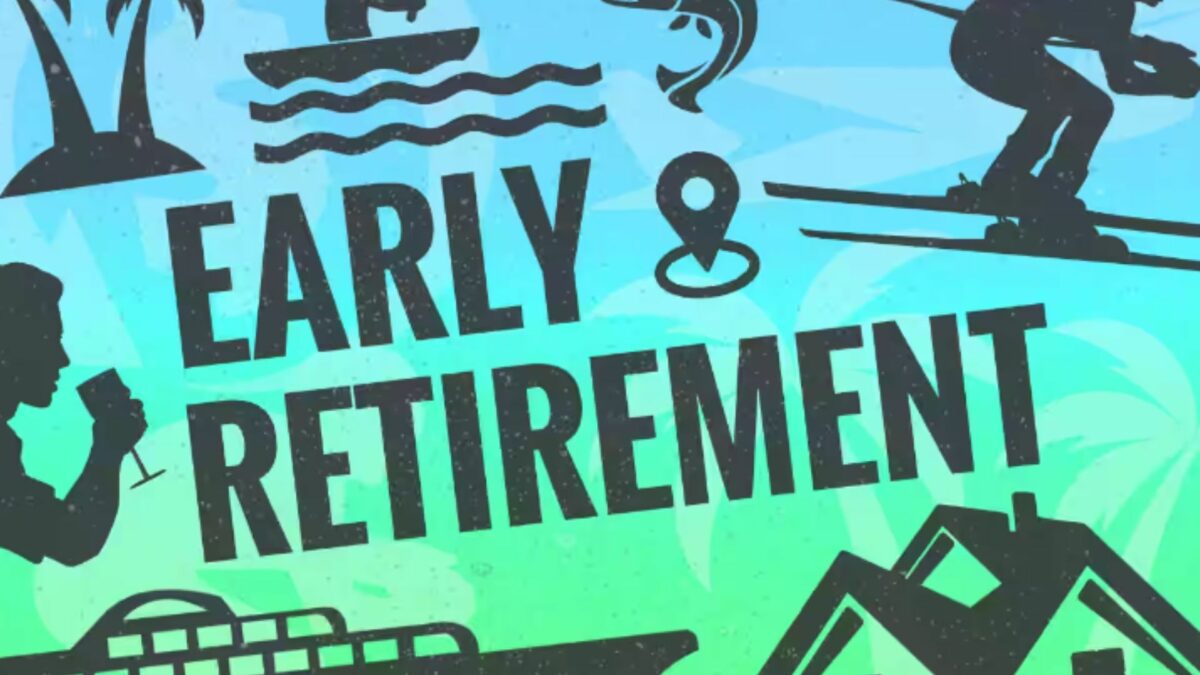“Diversification and globalization are the keys to the future.”
–Fujio Mitari
A recent article on Done By Forty (with a hat tip to Matt Becker at Mom and Dad Money for pointing him in my direction) lamented the lack of advice about asset allocation for early retirees. Though I’d argue with the premise of his site – his goal shouldn’t be retirement, per se (you can read that article to determine what I think the goal should be) – he brings up a good point.
The vast majority of the financial planning industry focuses on the traditional path to retirement: work until retirement age, retire, and hope you don’t run out of money before you die.
Well, what happens when you break away from that mold? Most of the financial press wants you to believe that the only other outcome is WORK LONGER. That’s not the reality. There are some of us out there who will hit the exit ramp long before we have a Social Security net.
While we’ve previously discussed strategies for bridging the gap between early retirement and the age when you can withdraw from retirement accounts without a penalty, we haven’t looked at how, if at all, your investments should change when you’re in early retirement compared to the usual path of working until Social Security kicks in.
Generally, investment advice says to keep 110 – your age in equities and the remainder in fixed income. The reason for that is that you want to allow your retirement savings to grow by investing in stocks but you want to reduce the ups and downs of your portfolio by investing in bonds. Invest too much in low-yield bonds too early, like going all in on Treasuries, and inflation will eat up your portfolio, leaving you to dumpster dive in your elder years.
Let’s see what happens if you stick to this advice.

Imagine a 40-year-old couple who is going to get $1,000 each in Social Security at age 67. They will spend $1,500 a month on housing and associated costs (utilities, maintenance, insurance, etc.). They’ll spend $500 a month on healthcare, and they’ll spend $3,000 on lifestyle (food, entertainment, travel, etc.), totaling $5,000 in today’s dollars. Given inflation, both of normal cost of living and of healthcare, to retire today, they need about $1.76 million in asset allocation.
I created a market and inflation simulation to see if this couple could make it to age 95 without running out of money. I used historical market returns for stocks, ranging from an annual loss of 44.2% to an annual gain of 56.8% and a median return of 10.5%, and for corporate bonds, ranging from a minimum annual gain of 2.5% to a maximum annual gain of 15.2% with a median gain of 5.2%, to determine this couple’s returns over time. Each year, the simulation picked a random return for stocks and bonds as well as choosing a random amount of inflation, ranging from 10.5% deflation to 18% inflation with a median inflation of 2.8%.
I ran the simulation 10,000 times to see how often our couple had money at age 95.
They had a positive net worth at age 95 89.4% of the time. 50% of the time, they had more than $32.5 million, and 50% of the time, they had less than that amount.
When I construct model scenarios, I usually like to aim for a 90% or higher success rate. This is right on the borderline, but if this couple was a client of mine, I’d give them the go-ahead with a few warning signs to look out for.
However, recent research by Dr. Wade Pfau, CFA shows that you’re most vulnerable to poor market performance in the first few years of retirement. His research was limited to 30 years of earning income and 30 years of retirement, but in that research, he showed that returns in the first year of retirement explained more than 14% of the final outcome for those retirees. Since the risk is mainly poor market performance in those first few years of retirement – bad years compounded with withdrawals when the total amount of money that the retirees have is expected to be at its lowest – I decided to tweak the strategy to determine if I could improve on this couple’s outcome.
Instead of using the 110–age asset allocation strategy that would lead to the couple investing 70% in stocks the first year of retirement, I had them only 20% invested in stocks and 80% invested in corporate bonds for the first five years of their retirement. The results?
This time, they had money left over 93.4% of the time, and their median net worth was $30.6 million. A shift lower by about $2 million to get well into the safety zone is a tradeoff that I’d be willing to make.
If 5 years is good, then 10 years should be better, right?
Yes and no.
The couple had money left over 94.6% of the time – a much smaller increase in safety. They also had a median net worth of $28.4 million. They paid more for a smaller increase in the cushion.
This makes sense intuitively, as, aside from investing completely in annuities, it’s nearly impossible to gain complete safety when investing in the market. Additionally, the longer that the couple is so heavily invested in bonds, the more likely it is that inflation could catch them.
The counterintuitive approach that Dr. Pfau advocates for the first few years of retirement for people in their sixties seems to hold true asset allocation for early retirees as well: shift into more conservative investments for a few years and then shift back into more aggressive investing. There’s a balance in asset allocation in retirement between being too conservative and having your portfolio decimated by inflation and being too aggressive and having unfortunate downturns in the market just as you retire destroy the value of your portfolio. Based on my analysis, portfolio protection in the first few years of early retirement seems to be a prudent approach to improving the chances of having your money outlast you.
Is this surprising information? What do you think? If you go conservative early in retirement, will you have the fortitude to dial the risk back up in a few years? Let’s talk about it in the comments below!
Author Profile
- John Davis is a nationally recognized expert on credit reporting, credit scoring, and identity theft. He has written four books about his expertise in the field and has been featured extensively in numerous media outlets such as The Wall Street Journal, The Washington Post, CNN, CBS News, CNBC, Fox Business, and many more. With over 20 years of experience helping consumers understand their credit and identity protection rights, John is passionate about empowering people to take control of their finances. He works with financial institutions to develop consumer-friendly policies that promote financial literacy and responsible borrowing habits.
Latest entries
 Low Income GrantsSeptember 25, 2023How to Get a Free Government Phone: A Step-by-Step Guide
Low Income GrantsSeptember 25, 2023How to Get a Free Government Phone: A Step-by-Step Guide Low Income GrantsSeptember 25, 2023Dental Charities That Help With Dental Costs
Low Income GrantsSeptember 25, 2023Dental Charities That Help With Dental Costs Low Income GrantsSeptember 25, 2023Low-Cost Hearing Aids for Seniors: A Comprehensive Guide
Low Income GrantsSeptember 25, 2023Low-Cost Hearing Aids for Seniors: A Comprehensive Guide Low Income GrantsSeptember 25, 2023Second Chance Apartments that Accept Evictions: A Comprehensive Guide
Low Income GrantsSeptember 25, 2023Second Chance Apartments that Accept Evictions: A Comprehensive Guide

